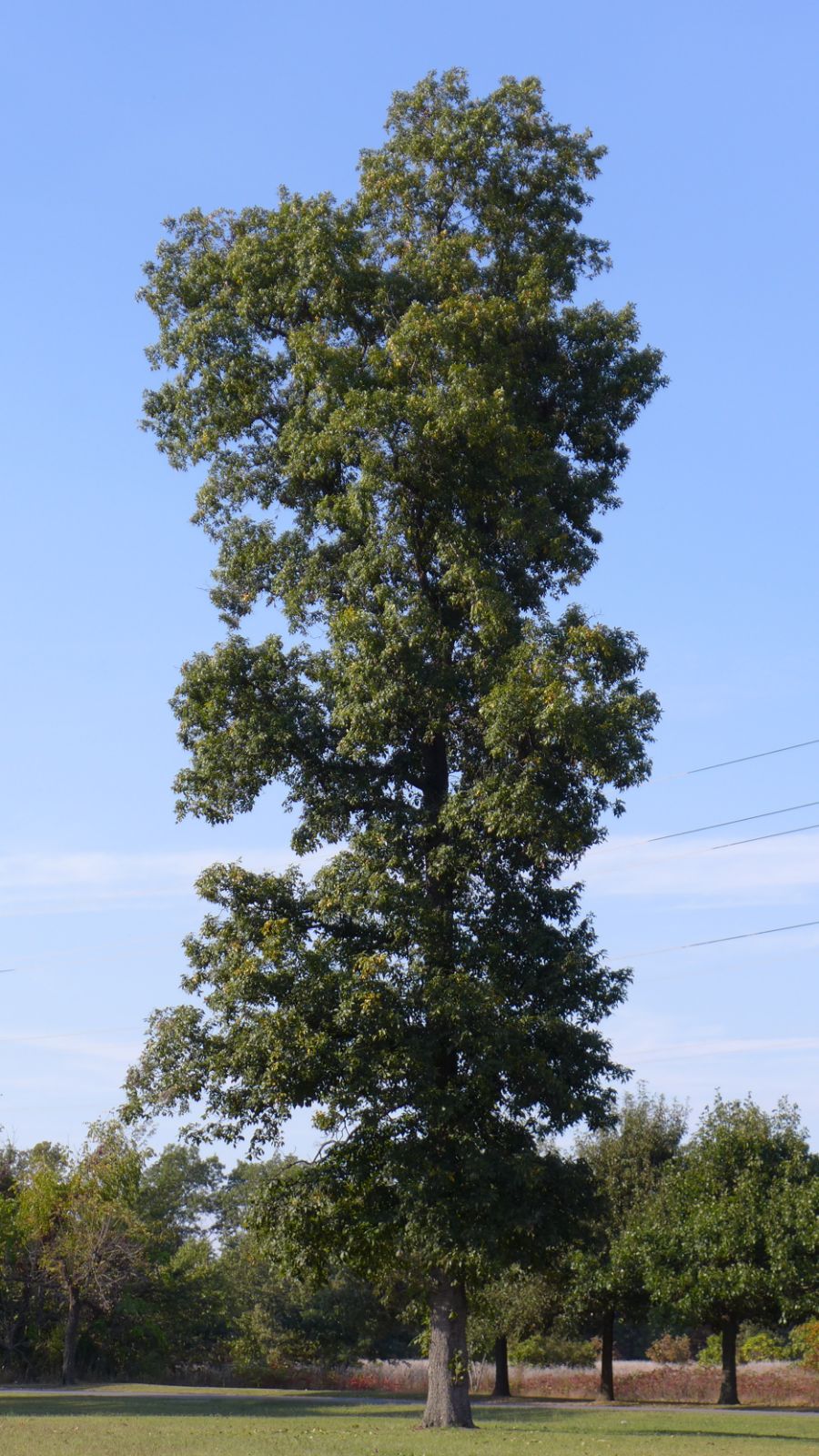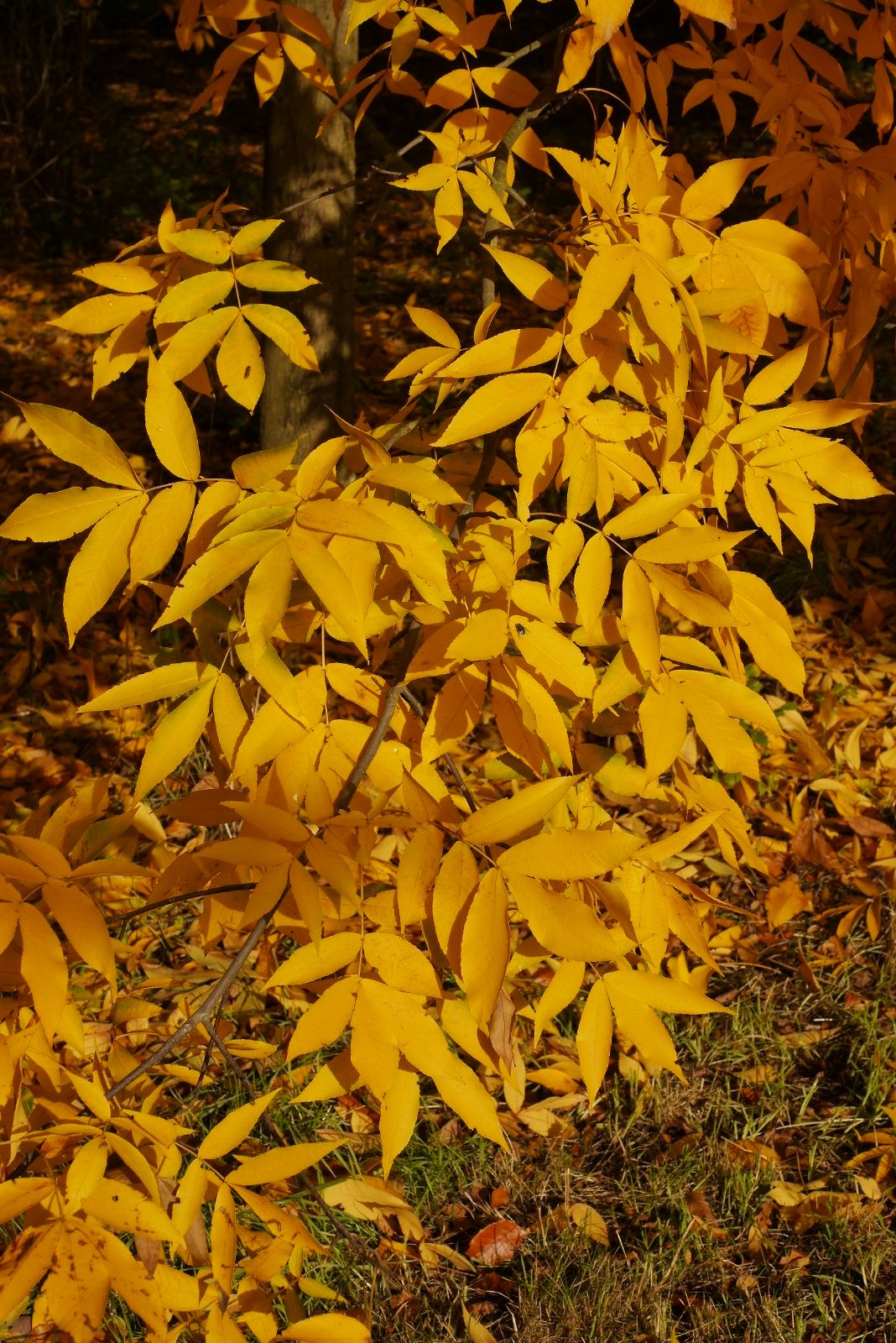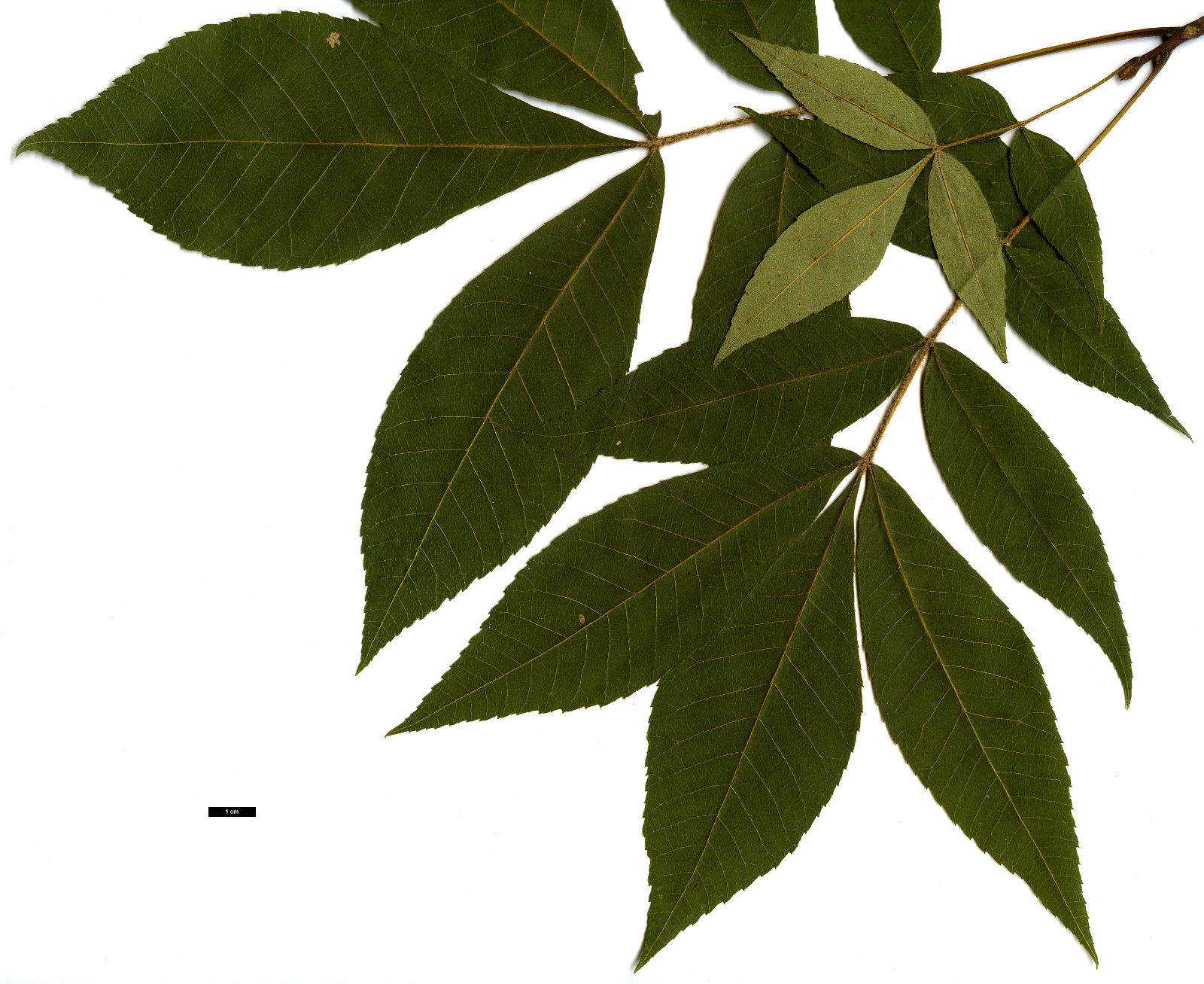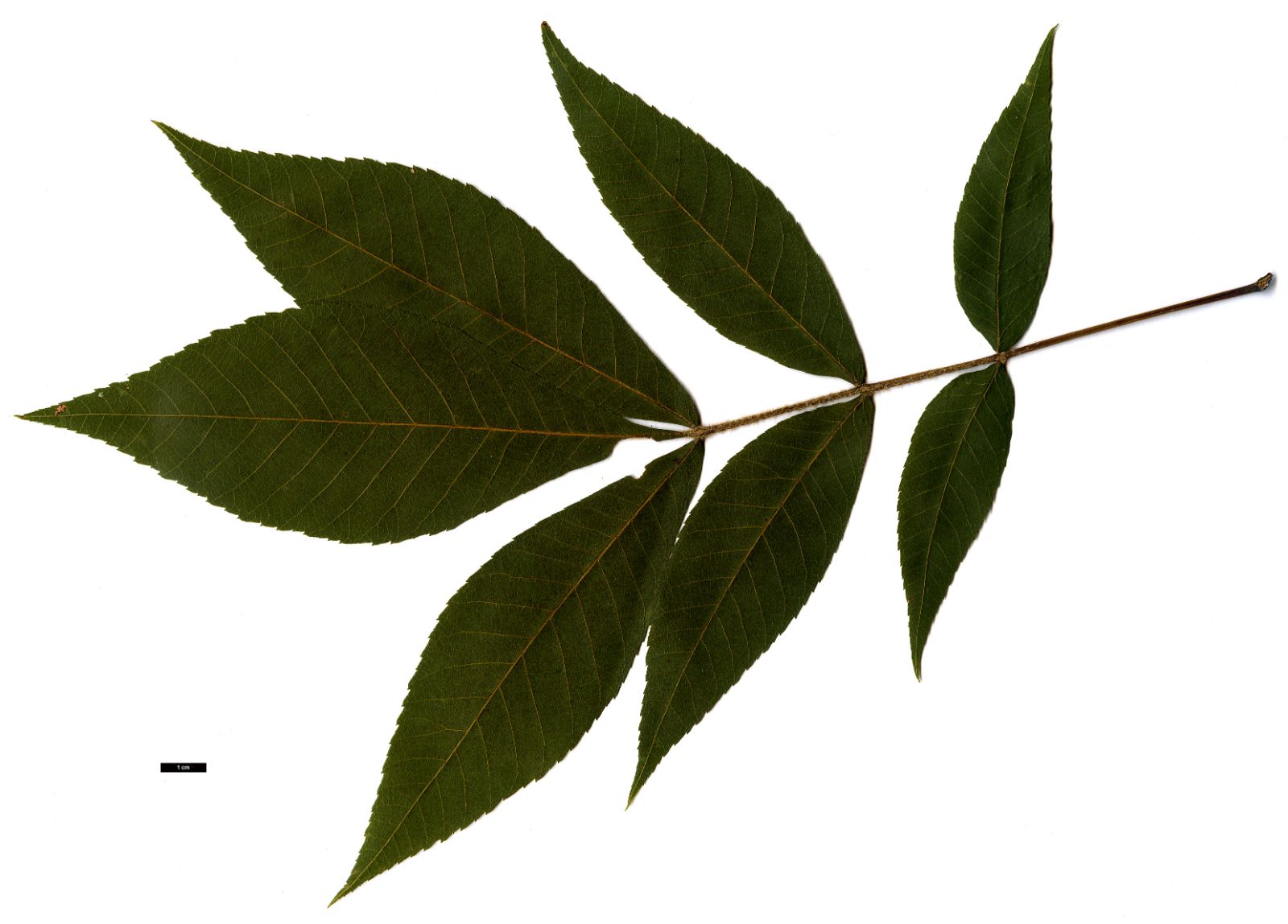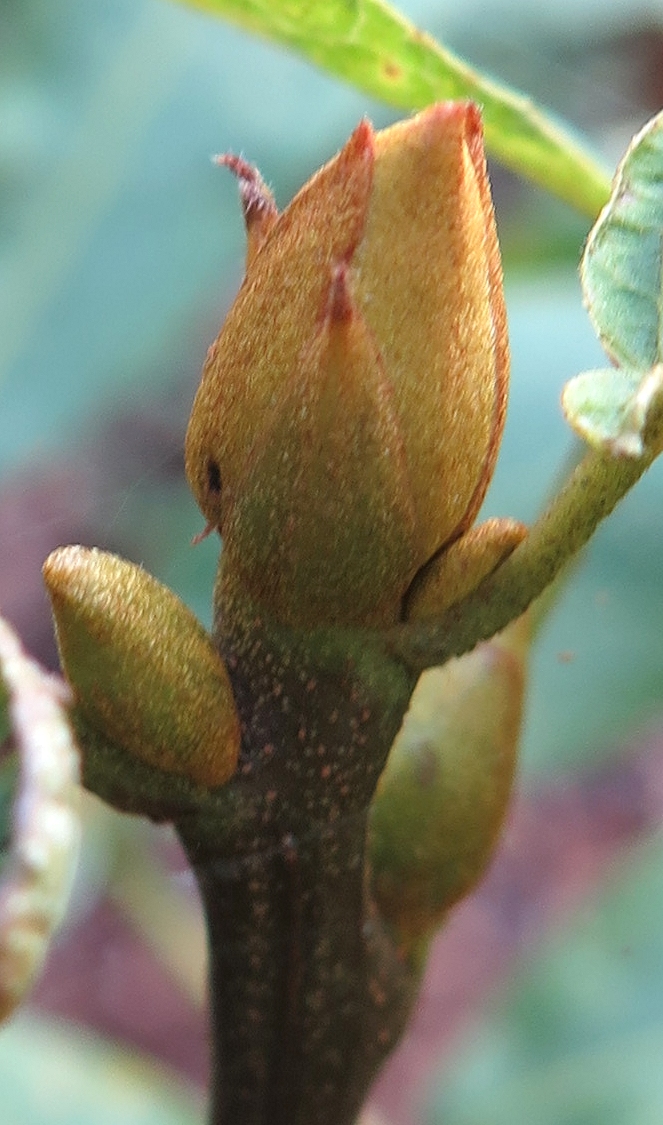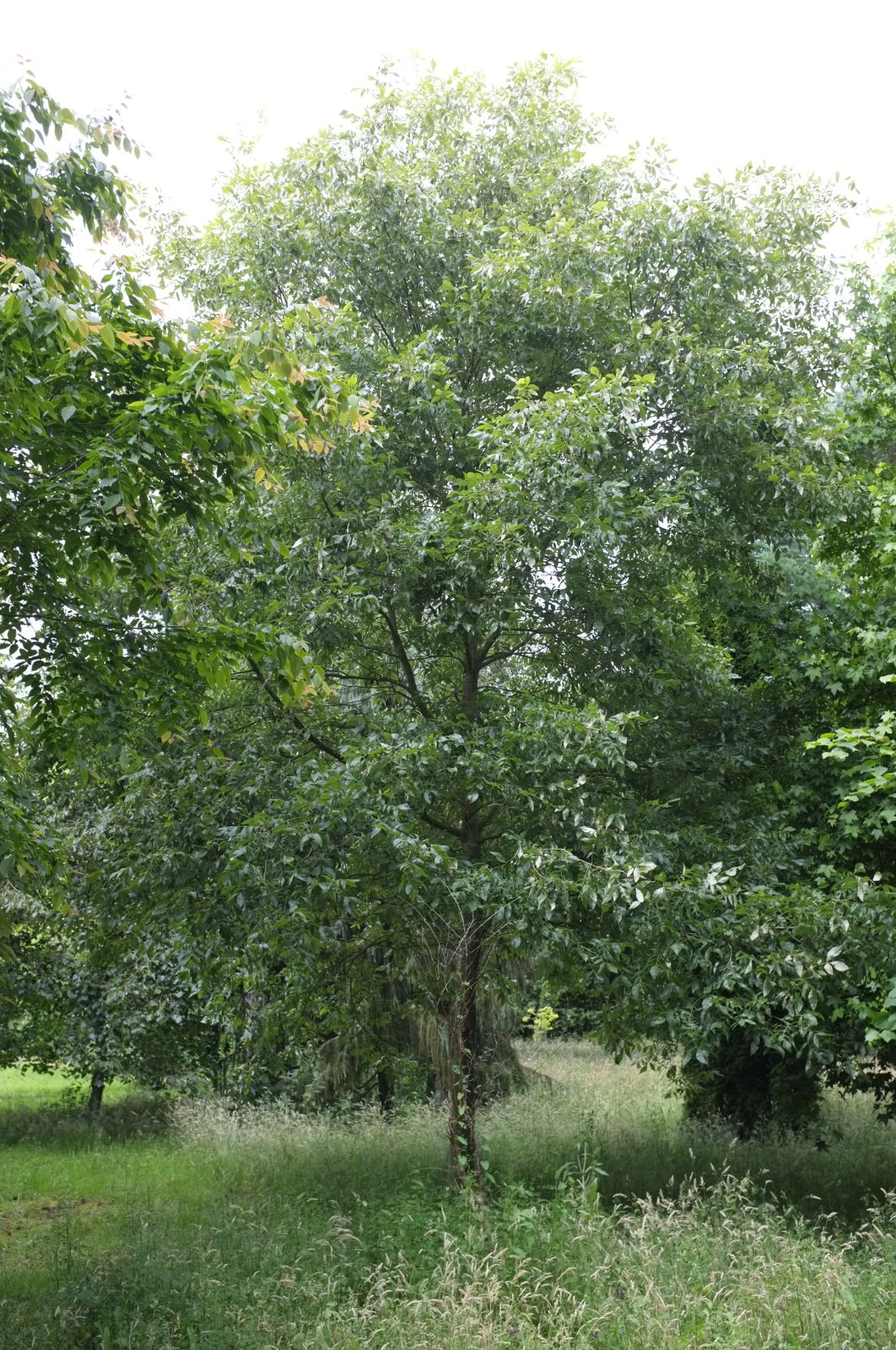Carya pallida
Sponsor
Kindly sponsored by
a member of the International Dendrology Society
Credits
Julian Sutton & Dan Crowley (2020)
Recommended citation
Sutton, J. & Crowley, D. (2020), 'Carya pallida' from the website Trees and Shrubs Online (treesandshrubsonline.
Genus
Common Names
- Sand Hickory
Medium tree to 29 m, to 1.2 m dbh. Bark dark grey, ridged, often deeply furrowed, not exfoliating. Branchlets reddish-brown, slender, glabrous or pubescent. Terminal bud 0.5–1 cm long, brown to silverish-grey or yellowish-gray. Leaves deciduous, imparipinnate, 30–60 cm long; leaflets (5–)7(–9), ovate to obovate or elliptic, 2–15 × 1–6 cm, leathery, upper surface largely glabrous, with scattered to dense, small, yellow, peltate scales when young; lower surface silvery tan, hirsute towards the base, often with stellate hairs and scattered to dense with larger, silvery grey, peltate scales and smaller, circular, yellow, peltate scales; margins finely to coarsely serrate, apex acuminate; petiolules 0–0.1 cm long; petiole and rachis sparsely to densely hirsute and scaly; petiole 3–10 cm long. Male catkins to 13 cm long, hirsute, scaly. Fruits tan to reddish-brown, 3–4 × 2–3 cm, obovoid to globose, slightly compressed, splitting to the middle or base; nuts finely wrinkled. (Stone & Whittemore 1997; Schaarschmidt 1999; Schaarschmidt 2002; Whittemore 2013).
Distribution United States South eastern quarter, from south east Missouri and Delaware south to eastern Louisiana and northern Florida
Habitat Dry woodland and exposed sites on well-drained sandy or rocky soils, 0–500 m
USDA Hardiness Zone 5-9
RHS Hardiness Rating H5
Conservation status Least concern (LC)
Sand Hickory is well named, with the species found predominantly on sandy, free draining soils (Whittemore 2013). It is an eastern counterpart to C. texana, C. pallida being found principally east of the Mississippi River and C. texana to its west. The two species intergrade where they meet in eastern Missouri and southern Illinois (Smith 1994; Whittemore & Stone 1997). Both intergrade with the variable and widespread C. glabra where they meet; these species, along with the Florida endenic C. floridana, form a tight-knit group of tetraploid species.
The presence of silvery scales on the lower leaf surfaces in C. pallida distinguish the two. Such scales and silvery hairs are also evident on the twigs and buds (Kurz 2003). As in C. texana, the nuts are sweet but thick shelled (Stone & Whittemore 1997; Grauke 2019).
Despite its wide range, Carya pallida was recognised as distinct as late as 1896 and is afforded brief mention by Dirr (2009) and by Sternberg (2004). This overlooked tree is seldom seen in collections in our area, whether in the United States or in Europe, but there are plants at Kew and Wakehurst Place, grown from seed collected by Howick and Warner (WAHO 183) in Virginia in 1986. A plant grown from seed collected on the Westonbirt-led expedition of 2014 (WECA 16) grows at Westonbirt and was 75 cm tall in 2018 (A. Vry, pers. comm. 2018). It was collected from a population in southeast Missouri discovered as recently as 1992 (Smith 1994). It is also grown at Arboretum Bokrijk, Genk, Belgium; as of October 2018, a specimen stands 3 m tall (J. Van Meulder, pers. comm. 2018).

